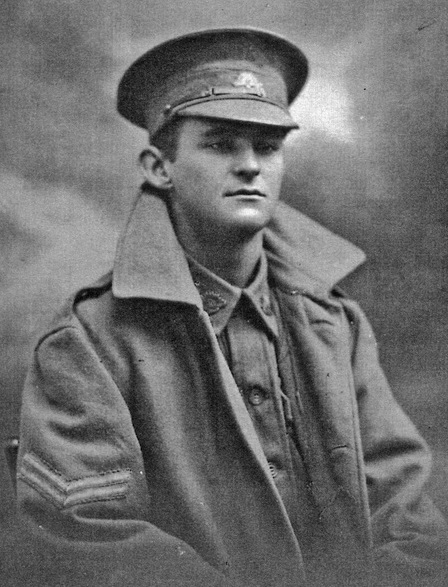![]() A Gallipoli Story: The Lost Shearer
A Gallipoli Story: The Lost Shearer

In early 1915, a 22-year-old shearer from Parkes NSW by the name of Arthur Hill was one of thousands of valiant young men caught up in the fervour to enlist in a war raging on the other side of the world between Britain and Germany and their respective allies. It was a time when Britain was seen as the Mother Country, Australia as one of His Majesty's dominions, and what better cause could there be than to serve Empire, King and Country?
On 30 January Arthur joined the 2nd Battalion of the newly formed AIF and began his training at Liverpool Barracks on the outskirts of Sydney. For a country boy, it must have been quite an experience – away from home for the first time and raring to embark on a ‘great adventure’. Three weeks later he overstayed his leave by twelve hours and was fined five shillings. His commanding officer noted that his general character was good. By April Fools Day his skylarking had escalated. This time he was found guilty of riotous behavior, obscene language, breaking camp and using a forged pass. Major Baxter fined him forty shillings (a huge sum in those days) but deemed his general character to be ‘fair’.
On 10 April Arthur embarked on the HMAT ‘Argyllshire’ for the Dardanelles. On 7 June he was killed in action. He had just turned twenty-three. His military records give no indication of what happened in the eight weeks between leaving port in Sydney and his death at Gallipoli. He was buried at Brown’s Dip (also known as Victoria Gully) just behind Lone Pine. In 1923 all 149 Australian soldiers buried at Brown’s Dip were disinterred in the presence of chaplains, and moved to the Lone Pine Cemetery, owing to the instability of the Brown's Dip site. There is no epitaph on Arthur’s gravestone.
Arthur Hill was my great uncle. Not a single picture of him survives, so I have included one of my grandfather, Arthur’s younger brother, instead (see above). Grandad joined up in 1916 and was gassed at Messines on the Western Front but survived the war. He had a collection of WWI photos including some of Arthur, but they were stolen from his garage back in the 1970s, together with the medals awarded to him and his dead brother. Among them was the ANZAC commemorative medallion issued in 1967. I do, however, recall seeing the pictures when I was a child. My teacher had asked us to compile a family tree. I happened to mention the project to my grandmother, who produced a box of precious sepia photographs for me to look at. The image I can still remember after all these years was a portrait of my grandfather in his uniform, standing beside a Zulu warrior, obviously taken in or near Capetown en route to Britain. As for Uncle Arthur, I must have seen pictures of him, but to my great regret, I didn't pay much attention.
A hundred years after his death, there is little tangible evidence of Uncle Arthur’s life. He was single, just starting his life. No wife, no children, therefore no direct descendants. After his death, the army sent his father two brown paper parcels containing a disc, a purse and a personal letter. Later there was a photograph of the grave.
In this digital age, Uncle Arthur’s service records are accessible online via the scanned documents in the National Archives. That means I can actually see his handwriting on the attestation papers. I can picture him from the description recorded by the enlistment officer: tall (6 feet ¼ inch), dark complexion, dark brown hair, a scar on the right forearm. And, of course, I can glean that he was a real larrikin with a healthy disregard for authority. I’m not sure what his niece, Elizabeth, now in her eighties, would make of Arthur’s misdemeanours. Rest assured I have no intention of telling her, for fear it might tarnish the idealised image she has of her uncle. For my part, Uncle Arthur will always be a hero.
Just this week I’ve discovered a wonderful resource called the First AIF Database, part of the First AIF Project (www.aif.adfa.edu.au), where there’s an entire page devoted to Arthur John Hill. He has a place of his own at last. Just in time for the hundredth anniversary of the Gallipoli campaign.
Deborah O’Brien
23 April 2015
